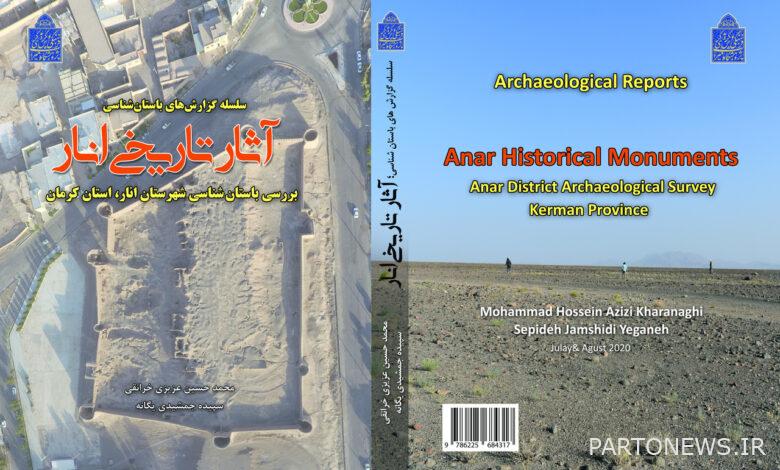The book “Series of Archaeological Reports of Pomegranate Historical Artifacts” was published

According to the Aria Heritage report, citing the public relations of the Cultural Heritage and Tourism Research Institute, this book, which was written by Hossein Azizi Kharanghi and Sepideh Jamshidi Yeganeh, is divided into seven sections, including overviews, historical monuments, religious monuments, historical contexts, historical sites, water structures and Qanat provides valuable information about the results of archaeological activities carried out in this area in the form of text, photos, diagrams and tables.
In this book, we read that Anar city is one of the driest areas of Kerman province, the deserts of Lam Yazare and the extensive salt marshes of this city have been one of the main factors preventing the formation of prehistoric settlements in this part of Iran, although the discovery of a site related to the Paleolithic era It is very important in this region, but the lack of cultural continuity in later prehistoric periods; It is still one of the archeological questions in Anar city.
From the Paleolithic period to historical periods, no cultural evidence was found, and in the historical period, with the formation of great governments and the expansion of commercial and economic relations, the formation and expansion of cities in the central regions of Iran, and the creation of communication networks and intercity roads, pomegranate was also considered. And one of its most significant works, namely the historic Pomegranate Citadel, was formed in the center of this city, which has been the center of Pomegranate until the late period. The climate and environmental conditions have led to the formation of hardworking people who were able to transport water from the surrounding mountainous areas to the center of the plain by building thousands of kilometers of aqueducts and brought prosperity to this region.
Pomegranate city reaches its peak of growth and prosperity during the Islamic era, especially during the Safavid period, historical buildings, numerous caravanserais all show the commercial prosperity of Pomegranate during this period as a city in the middle of the road from Kerman to Yazd, which in addition to establishing a connection between the two regions He has also played an effective role in strengthening such cultural-commercial relations. This growth continued until the Qajar period, but after the Islamic revolution and the rapid growth of urbanization and urbanization in this part, historical monuments were severely destroyed and attacked in such a way that today there are no traces of the historical context and descriptions that are written in historical books and Geographically, Pomegranate is not visible and only single buildings in the corners of this city have been telling about its greatness and historical prosperity. And the expansion of pistachio fields and the need for suitable soil, large parts of the surrounding areas and historical buildings of this city have also been attacked and violated.
Before conducting the archeological surveys of Anar in June and July 2019, 16 works in this city were registered in the list of national monuments of Iran, but during the surveys and visits, 121 works were identified, which chronologically covers the historical period to the contemporary era. they take.
end of message/

